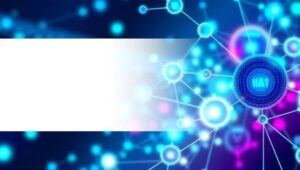Distributed AI Swarms: Collective Intelligence in Action (2028)
Artificial intelligence is rapidly evolving, and one of the most promising advancements is the development of distributed AI swarms. In this post, we’ll explore what AI swarms are, how they work, and the potential impact they could have on various industries by 2028.
What are Distributed AI Swarms?
Distributed AI swarms are systems composed of multiple AI agents that work together to solve complex problems. Unlike traditional AI systems that rely on a centralized processing unit, AI swarms distribute the computational load across numerous nodes. Each agent in the swarm is capable of independent decision-making, but they communicate and coordinate with each other to achieve a common goal.
Think of it like a colony of ants: each ant performs simple tasks, but collectively, they can build complex structures and efficiently forage for food. Similarly, AI swarms leverage the power of collective intelligence to tackle problems that are too difficult for individual AI agents.
How Do AI Swarms Work?
The functionality of AI swarms relies on several key components:
- Autonomous Agents: Each AI agent operates independently, using its own algorithms and datasets to make decisions.
- Communication Network: Agents communicate with each other through a network, sharing information and coordinating actions.
- Swarm Intelligence Algorithms: These algorithms enable the swarm to collectively solve problems, often inspired by natural phenomena like ant colonies or bird flocks.
- Adaptive Learning: The swarm can learn from its experiences, adjusting its behavior to improve performance over time.
Potential Applications by 2028
By 2028, distributed AI swarms are expected to have a transformative impact on numerous fields:
- Robotics and Automation: AI swarms can enable robots to work together in complex environments, such as warehouses or construction sites, to optimize workflows and increase efficiency.
- Environmental Monitoring: Swarms of drones equipped with sensors can monitor air and water quality, track wildlife populations, and detect pollution sources in real-time.
- Smart Cities: AI swarms can optimize traffic flow, manage energy consumption, and enhance public safety by analyzing data from various sources and coordinating city services.
- Healthcare: AI swarms can assist in medical diagnosis, drug discovery, and personalized treatment plans by analyzing vast amounts of patient data and medical research.
- Cybersecurity: AI swarms can detect and respond to cyber threats in real-time by monitoring network traffic, identifying anomalies, and coordinating defense strategies.
Challenges and Considerations
Despite their potential, there are also challenges associated with the development and deployment of AI swarms:
- Complexity: Designing and managing AI swarms can be complex, requiring expertise in distributed systems, AI algorithms, and communication protocols.
- Scalability: Ensuring that AI swarms can scale to handle large numbers of agents and complex problems is an ongoing challenge.
- Security: Protecting AI swarms from cyber attacks and ensuring the privacy of data collected by the swarm are critical considerations.
- Ethical Implications: Addressing the ethical implications of AI swarms, such as bias, fairness, and accountability, is essential to ensure that these technologies are used responsibly.
Conclusion
Distributed AI swarms represent a significant step forward in the evolution of artificial intelligence. By leveraging the power of collective intelligence, AI swarms can solve complex problems and drive innovation across a wide range of industries. As we move closer to 2028, we can expect to see more widespread adoption of AI swarm technologies, transforming the way we live and work.




